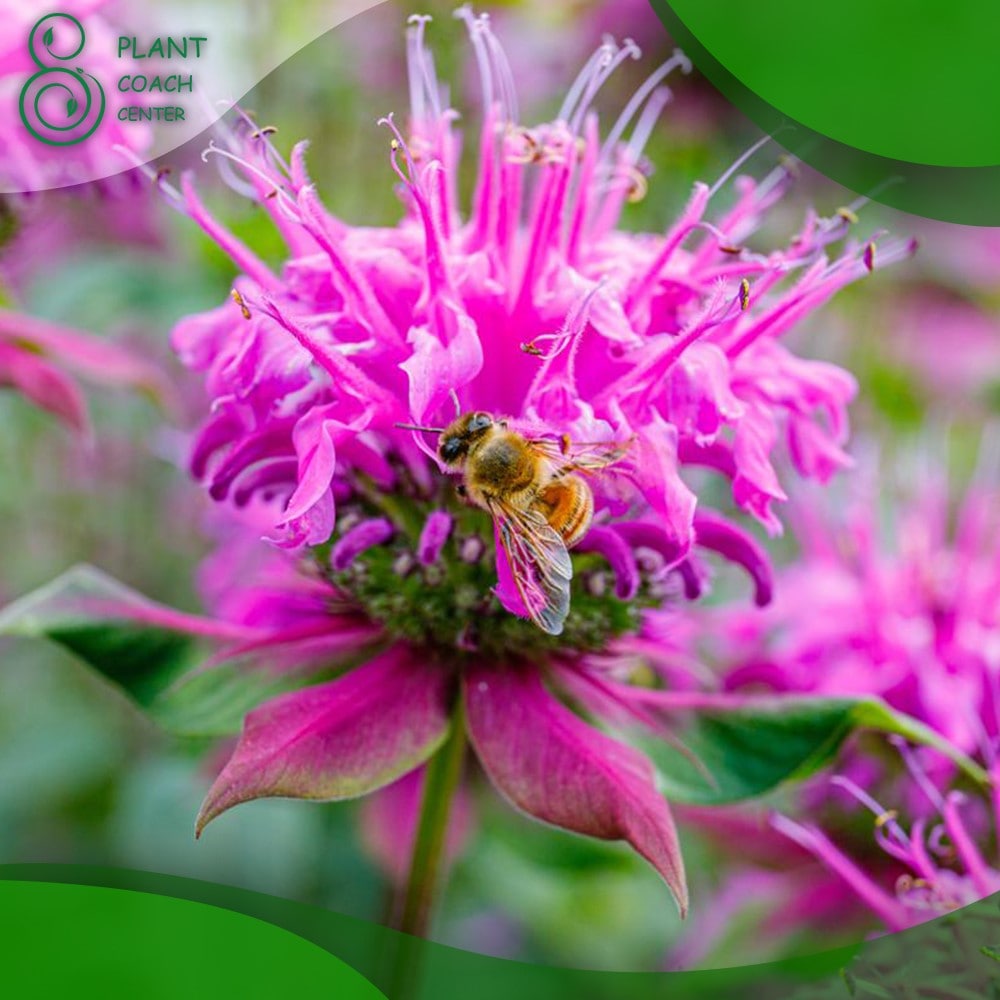Gardening enthusiasts are often drawn to the vibrant and aromatic blooms of bee balm (Monarda), a popular perennial plant known for attracting pollinators. As a gardener, understanding how to care for your bee balm effectively is essential for its long-term health and optimal growth. This comprehensive guide aims to delve into the world of plant coaching, exploring the art of pruning bee balm and addressing common plant problems that may arise.
What is Bee Balm?
Bee balm, also referred to as Monarda or Bergamot is a genus of flowering plants belonging to the mint family (Lamiaceae). Native to North America, bee balm species vary in height, color, and foliage, but they all share similar characteristics, such as tubular flowers and aromatic leaves. The most commonly found species include Monarda didyma (scarlet bee balm), Monarda fistulosa (wild bergamot), and Monarda citriodora (lemon bee balm).
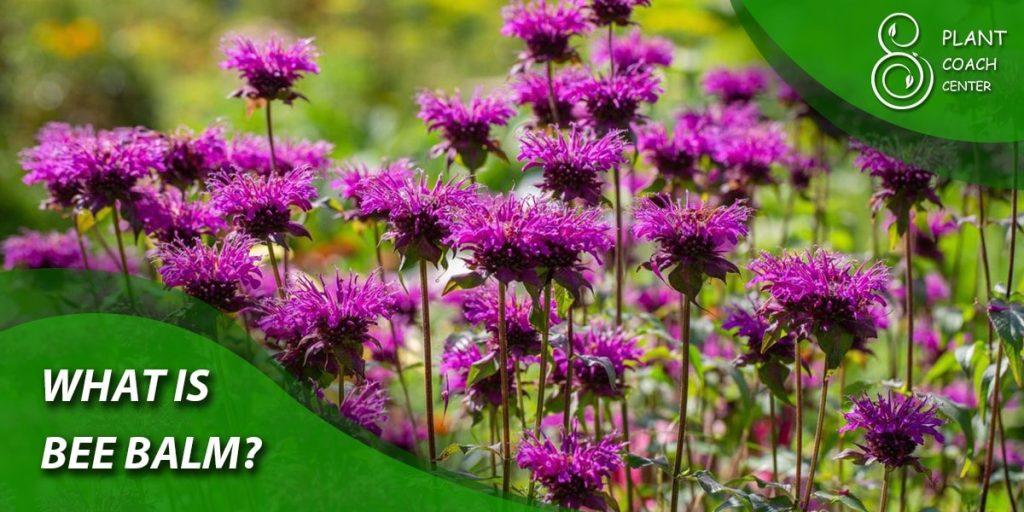
The Role of Plant Coaching in Gardening
Plant coaching encompasses the techniques and practices employed to guide and support the growth of plants, ensuring their vitality and longevity. With bee balm, plant coaching plays a crucial role in maintaining the plant’s health, controlling its growth, and maximizing its ornamental value. By learning the proper techniques of pruning and understanding the signs of distress, gardeners can employ plant coaching to optimize the well-being of their bee balm plants.
Understanding Plant Problems and Their Impact on Bee Balm
Plant problems can stem from various factors, including pests, diseases, nutrient deficiencies, and environmental stressors. Bee balm, like any other plant, is susceptible to these issues, which can hinder its growth and overall health. Recognizing the signs of distress in bee balm and promptly addressing them is essential for ensuring its vitality. By understanding the impact of plant problems on bee balm, gardeners can take proactive measures to prevent or alleviate such issues.
Bee Balm Varieties and Characteristics
Overview of Different Bee Balm Species
Bee balm encompasses a diverse range of species, each with its unique characteristics and growing requirements. Understanding the distinctions among the various species can aid gardeners in choosing the right type of bee balm for their gardens. Let’s explore some of the common bee balm species:
- Monarda didyma (Scarlet Bee Balm): This species is renowned for its brilliant scarlet-red flowers and lush green foliage. It thrives in moist soil and prefers partial shade, making it an excellent addition to woodland gardens or areas with consistent moisture.
- Monarda fistulosa (Wild Bergamot): Wild bergamot features lavender to purple flowers and has more subdued, aromatic foliage compared to other bee balm species. It is adaptable to various soil types and can tolerate drought better than some other varieties.
- Monarda citriodora (Lemon Bee Balm): As the name suggests, this species emits a delightful lemony scent when its leaves are crushed. It displays pink to lavender flowers and is well-suited for sunny locations with well-drained soil.
Growth Patterns and Habitats
Bee balm plants exhibit different growth patterns, ranging from clump-forming to spreading. Understanding these growth habits is vital for planning their placement in the garden and allowing adequate space for their development. Additionally, considering the native habitats of different bee balm species can provide insight into their preferred growing conditions and care requirements.
Identifying Common Varieties
Over the years, various cultivars and hybrids of bee balm have been developed, offering gardeners a wide array of choices concerning flower colors, heights, and disease resistance. Some popular cultivars include ‘Jacob Cline’ (bright red flowers), ‘Purple Rooster’ (vivid purple blooms), and ‘Marshall’s Delight’ (pink flowers with compact growth).
The Growth Cycle of Bee Balm
Stages of Bee Balm Growth
Bee balm, like many perennials, goes through distinct growth stages throughout the year. Understanding these stages can help gardeners determine the appropriate times for pruning and other maintenance tasks. The key growth stages of bee balm are:
- Dormancy: During winter, bee balm enters a period of dormancy, where its above-ground growth dies back, and its energy is stored in the roots.
- Spring Growth: As temperatures rise and daylight increases, bee balm emerges from dormancy, sending up new shoots and foliage.
- Flowering: In late spring and summer, bee balm bursts into bloom, attracting bees, butterflies, and hummingbirds with its vibrant flowers.
- Post-Flowering: After the flowering period, bee balm may produce seed heads and continue to grow foliage, preparing for its eventual dormancy.
Seasonal Changes and Bee Balm
Bee balm is sensitive to seasonal changes, and its growth and blooming patterns vary with the changing seasons. Understanding these fluctuations is crucial for determining the ideal time for pruning and other garden interventions.
Recognizing Signs of Distress in Bee Balm
Common Plant Problems and Pests
Bee balm, like any other garden plant, is susceptible to a range of plant problems and pest infestations. Some of the most common issues that gardeners may encounter with bee balm include:
- Powdery Mildew: A fungal disease that appears as a white, powdery coating on the leaves, leading to stunted growth and reduced flowering.
- Aphids: Small, sap-sucking insects that can cause distortion of new growth and the presence of sticky honeydew on the leaves.
- Spider Mites: Tiny pests that feed on the undersides of leaves, causing stippling and weakening the plant.
- Rust: Another fungal disease that creates rusty-colored spots on the leaves, leading to defoliation in severe cases.
- Root Rot: This occurs due to overwatering or poorly drained soil, resulting in yellowing leaves and wilting.
Nutrient Deficiencies and Soil Health
Nutrient deficiencies can manifest in bee balm as pale, yellowing leaves, poor growth, and reduced flowering. Ensuring the soil provides adequate essential nutrients is essential for the plant’s overall health. Conducting soil tests and amending the soil with organic matter or appropriate fertilizers can help rectify nutrient imbalances.
Environmental Stressors Affecting Bee Balm
Bee balm can face various environmental stressors that impact its growth and health. These stressors include:
- Watering: Overwatering or underwatering can both harm bee balm, making it crucial to strike the right balance for optimal growth.
- Temperature Extremes: Bee balm may struggle during prolonged periods of extreme heat or cold.
- Sunlight: While most bee balm species prefer full sun or partial shade, excessive sun exposure can lead to leaf scorch.
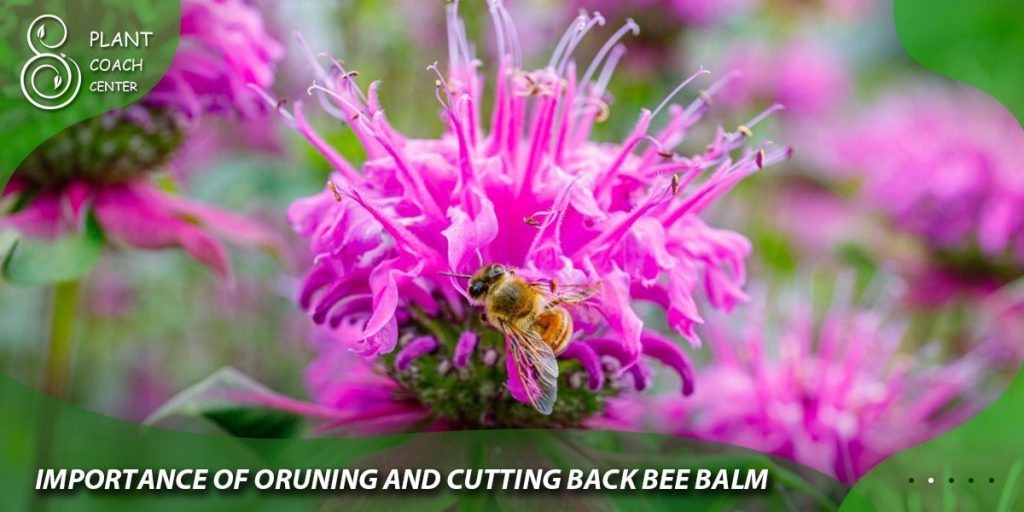
Importance of Pruning and Cutting Back Bee Balm
Benefits of Pruning Bee Balm
Pruning is a valuable plant coaching technique that involves removing specific parts of the plant to promote healthier growth and aesthetics. For bee balm, pruning offers several benefits:
- Encourages bushier growth: Pruning stimulates lateral branching, leading to a fuller, more compact plant.
- Increases flower production: Removing spent blooms encourages the plant to produce more flowers, extending the blooming period.
- Controls size: Pruning helps prevent bee balm from becoming overly tall and sprawling, making it more manageable in the garden.
Promoting Healthier Growth with Pruning
Pruning bee balm not only enhances its appearance but also supports its overall health and vitality. By cutting back diseased or damaged stems, gardeners can prevent the spread of infections and redirect the plant’s energy toward healthy growth.
Enhancing Flower Production and Aesthetics
Pruning is an excellent tool for shaping bee balm plants and enhancing their visual appeal in the garden. By selectively removing stems and deadheading spent blooms, gardeners can create a tidy and attractive display of bee balm flowers.
When to Prune Bee Balm: Timing and Frequency
Pruning Considerations Based on Climate Zones
The ideal timing for pruning bee balm can vary depending on the climate zone in which the plant is growing. Gardeners in different regions should take into account their specific climates and growing seasons to determine the most suitable pruning schedule.
- Temperate Climate Zones: In temperate regions with distinct seasons, early spring is often the best time to prune bee balm, just as new growth starts to emerge.
- Mediterranean Climate Zones: Areas with mild, wet winters and hot, dry summers can benefit from pruning bee balm in late winter or early spring to prepare for the growing season.
- Tropical Climate Zones: Gardeners in tropical regions can generally prune bee balm throughout the year, focusing on removing spent blooms and controlling size and shape.
Seasonal Pruning: Spring, Summer, Fall, and Winter
Spring Pruning: In temperate climates, early spring (when the last frost has passed) is an excellent time for pruning bee balm. Remove any dead or damaged stems and trim back the plant to promote new growth.
Summer Pruning: During the summer, focus on deadheading spent flowers to encourage the plant to produce more blooms and maintain a tidy appearance.
Fall Pruning: In preparation for winter, trim bee balm back in the fall. Cut the stems to around 3-4 inches above the soil level, leaving some foliage to protect the plant during the colder months.
Winter Pruning: In tropical climates or regions with milder winters, winter pruning can be done selectively to remove any diseased or overgrown stems.
How Often Should Bee Balm Be Pruned?
The frequency of pruning bee balm depends on various factors, including the plant’s growth rate, desired size, and overall health. As a general guideline:
- Annual Pruning: Bee balm benefits from a yearly pruning session to maintain its shape, remove spent blooms, and promote healthy growth.
- Regular Deadheading: Throughout the growing season, regularly deadhead the flowers to encourage continuous blooming and prevent the plant from self-seeding excessively.
Essential Pruning Tools
To perform effective and precise pruning on bee balm, gardeners should have the right tools:
- Pruning Shears: Quality, sharp pruning shears are essential for clean cuts without damaging the stems.
- Hand Pruners: For smaller stems and precise cuts, hand pruners are a valuable addition to a gardener’s toolkit.
- Loppers: For larger and thicker stems, loppers can provide the necessary leverage and cutting power.
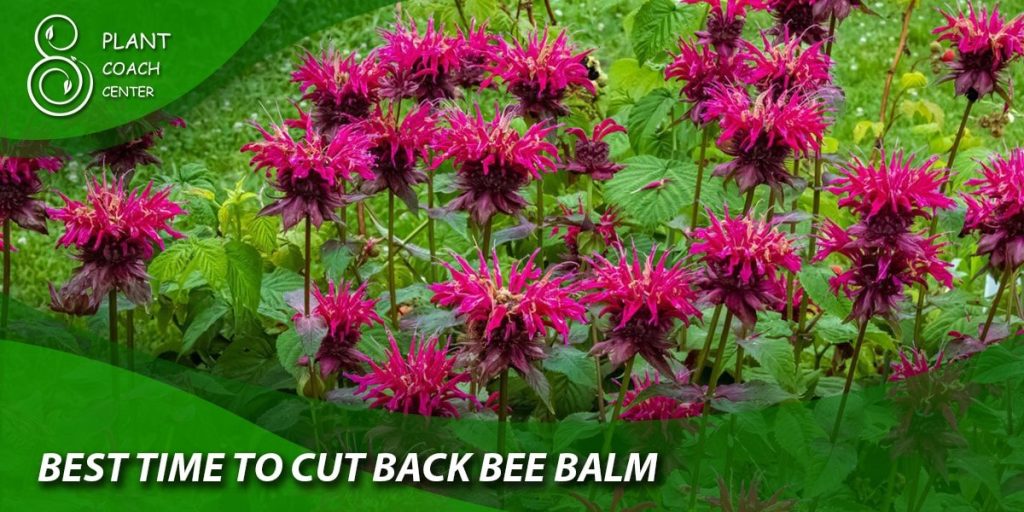
Different Pruning Methods and Their Effects
- Deadheading: Removing spent flowers not only enhances the appearance of bee balm but also encourages the plant to produce more blooms.
- Pinching: Pinching involves using fingers or shears to remove the tips of young stems, promoting bushier growth and preventing leggy growth.
- Thinning: Thinning entails selectively removing some stems at their base to improve air circulation and reduce overcrowding.
Pruning Dos and Don’ts
- Dos:
1. Do use clean and sharp pruning tools to make precise cuts and reduce the risk of disease transmission.
2. Do prune bee balm regularly to maintain its shape, improve flowering, and prevent self-seeding.
3. Do remove any diseased or damaged stems promptly to prevent the spread of infections.
- Don’ts:
1. Don’t prune bee balm too late in the growing season, as this may remove buds and reduce the number of flowers.
2. Don’t prune more than one-third of the plant’s total growth at once, as excessive pruning can stress the plant.
3. Don’t forget to disinfect your pruning tools between cuts, especially when dealing with diseased plants, to avoid spreading infections.
Step-by-Step Guide to Pruning Bee Balm
Preparing for Pruning
- Choose the Right Time: Before you begin pruning, make sure it’s the appropriate season for your climate zone. Early spring is generally the best time for temperate regions, while tropical regions can prune throughout the year.
- Inspect the Plant: Take a close look at your bee balm for any signs of distress, disease, or damaged stems. Note areas that need attention during the pruning process.
- Gather Your Tools: Ensure you have all the necessary pruning tools, including sharp pruning shears, hand pruners, and loppers, cleaned and ready for use.
Pruning Young Bee Balm Plants
- Limit pruning in the First Year: For newly planted bee balm, limit pruning in the first year to allow the plant to establish a robust root system.
- Remove Spent Flowers: Focus on deadheading spent flowers during the first year to encourage the plant to put energy into root development rather than seed production.
- Pinch for Bushier Growth: If you notice young bee balm plants becoming leggy, consider pinching the tips of new growth to encourage branching and a bushier habit.
Pruning Established Bee Balm Plants
- Assess the Plant’s Growth: Determine which stems need pruning based on their health, length, and overall appearance.
- Remove Dead and Diseased Stems: Start by removing any dead or diseased stems and cutting them back to their point of origin near the base of the plant.
- Thin Out Overcrowded Areas: If your bee balm has become crowded, thin out some stems by cutting them back to the base, improving air circulation.
- Deadhead Spent Flowers: Continue to deadhead throughout the growing season to maintain continuous blooming and prevent self-seeding.
- Shape the Plant: Trim the plant to achieve the desired shape and size. Focus on cutting just above a leaf node to promote new growth.
- Maintain a Natural Form: Aim to preserve the natural form of bee balm while removing unwanted or unsightly growth.
Dealing with Common Bee Balm Problems
- Powdery Mildew: To combat powdery mildew, ensure good air circulation around the plant and avoid overhead watering. In severe cases, use organic fungicides.
- Aphids and Spider Mites: Spray a strong jet of water to dislodge aphids and spider mites. Ladybugs and predatory insects can also help control these pests naturally.
- Rust: Remove infected leaves promptly and consider using fungicidal treatments if rust is a recurring problem.
- Root Rot: Improve drainage and avoid overwatering to prevent root rot. Ensure your bee balm is planted in well-draining soil.
Companion Planting with Bee Balm
- Attracting Pollinators: Plant bee balm alongside other nectar-rich flowers to attract pollinators like bees, butterflies, and hummingbirds.
- Pest Control: Some companion plants, such as chives and garlic, can help repel pests that might otherwise attack bee balm.
- Enhancing Growth: Pair bee balm with herbs like basil or mint, which can improve the plant’s health and enhance its aromatic qualities.
Incorporating these companion plants into your garden can create a thriving ecosystem that benefits both your bee balm and other nearby plants.
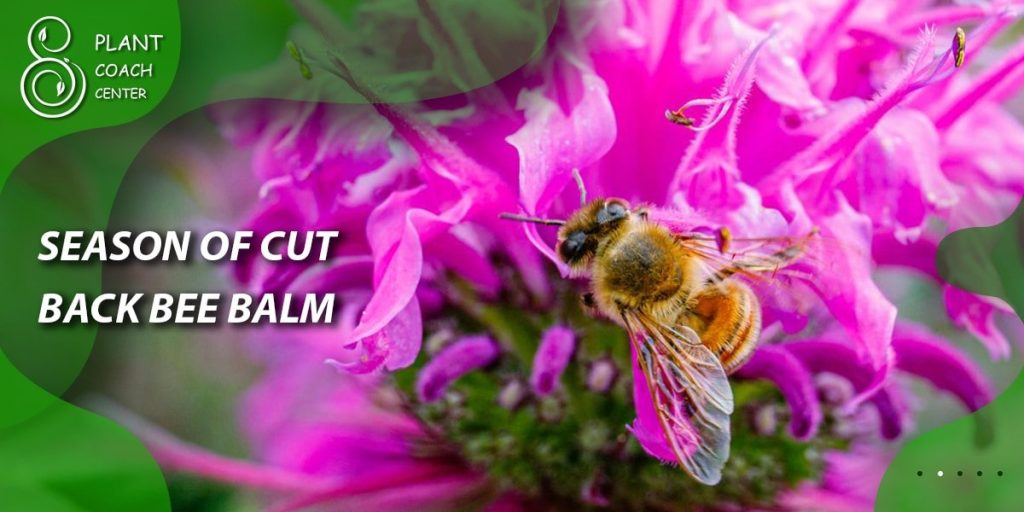
Winter Care for Bee Balm
- Mulching: Apply a layer of organic mulch around the base of bee balm plants before winter to protect the roots from frost.
- Cutting Back: In areas with harsh winters, cut back bee balm stems to a few inches above the soil after the first frost to prepare for dormancy.
- Division: Fall is an excellent time to divide overcrowded bee balm clumps, ensuring healthier growth in the coming season.
Continued Success: Real-Life Plant Coaching Experiences
Gardeners have shared their experiences with plant coaching, particularly with bee balm, and the positive impact it has had on their gardens. By adapting and implementing plant coaching techniques, gardeners have seen their bee balm thrive, produce more flowers, and attract an array of pollinators.
Additional Tips for Bee Balm Care and Plant Coaching
- Watering: Provide your bee balm with consistent moisture, especially during dry spells. Avoid overwatering, as excessively damp conditions can lead to root rot.
- Soil pH: Bee balm thrives in slightly acidic to neutral soil (pH 6.0 to 7.0). Conduct soil tests to monitor pH levels and amend the soil if needed.
- Fertilization: Applying a balanced, slow-release fertilizer in early spring can help nourish your bee balm throughout the growing season.
- Winter Mulch: In colder regions, consider using additional winter mulch to protect the crowns of bee balm plants during freezing temperatures.
- Sustainable Practices: Embrace sustainable gardening practices, such as composting and avoiding chemical pesticides, to promote a healthy ecosystem in your garden.
Learning from Expert Plant Coaches
Plant coaching can be further enriched by seeking guidance from experienced gardeners, horticulturists, and plant enthusiasts. Participate in gardening clubs or forums, attend workshops, and read books and articles written by experts in the field. Their insights and experiences can offer valuable tips and innovative approaches to nurturing your bee balm and other plants effectively.
Sharing Your Success Stories
As you embark on your journey of plant coaching with bee balm, consider documenting your experiences and successes. Share your knowledge with fellow gardeners, write about your triumphs and challenges, and contribute to the gardening community. Engaging with other gardeners can foster a sense of camaraderie and encourage a mutual exchange of knowledge and ideas.
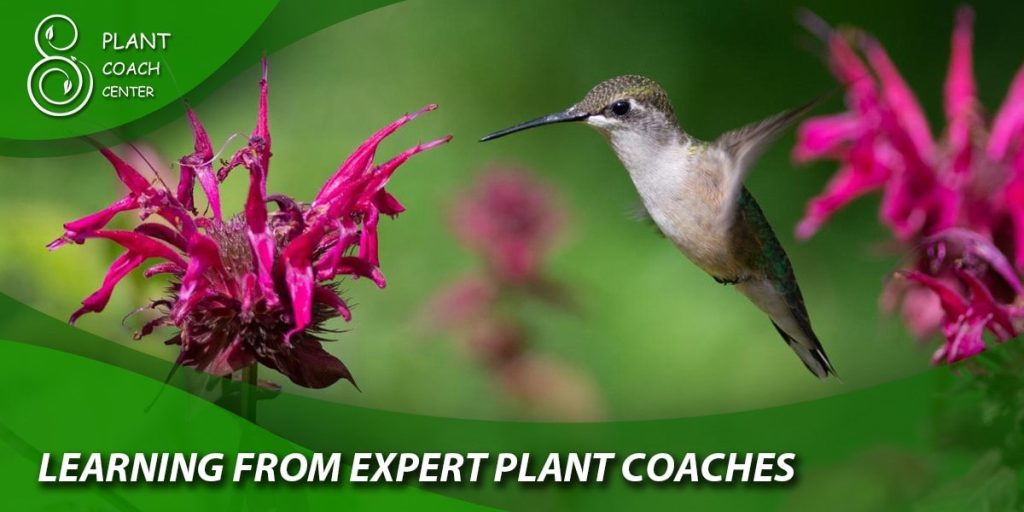
A Bountiful Bee Balm Garden: A Rewarding Endeavor
Caring for and pruning bee balm can be a gratifying endeavor for gardeners of all levels. As you immerse yourself in the world of plant coaching, you’ll witness the rewards of your efforts with a garden teeming with life and beauty. Bee balm’s vibrant colors, aromatic blooms, and the delightful presence of pollinators will be a testament to the art of gardening and the magic of nurturing nature.
So, put on your gardening gloves, grab your pruning shears, and embark on this exciting journey of tending to your bee balm with care and passion. With the knowledge you’ve gained from this comprehensive guide and your dedication as a gardener, your bee balm garden will flourish, enriching your outdoor space and bringing joy to all who behold its splendor.
Conclusion: Cultivating a Thriving Bee Balm Garden
In conclusion, bee balm is a beautiful and rewarding addition to any garden, but its success relies on proper plant coaching and care. Understanding when to prune bee balm, identifying common plant problems, and employing effective techniques can lead to a flourishing and visually stunning garden filled with vibrant bee balm blooms and buzzing pollinators.
With this comprehensive guide as your resource, you can confidently embark on your plant coaching journey and enjoy the joys of gardening while helping your bee balm thrive for years to come. Happy gardening and happy plant coaching!
Get started on your sustainable gardening journey with plantcoachcenter.com!
When is the best time to prune bee balm?
Early spring or late winter, depending on your climate.
How often should I prune my bee balm?
Prune annually to maintain shape and deadhead throughout the growing season.
Can I use chemical pesticides on bee balm?
Avoid chemical pesticides; opt for sustainable, organic pest control methods.


